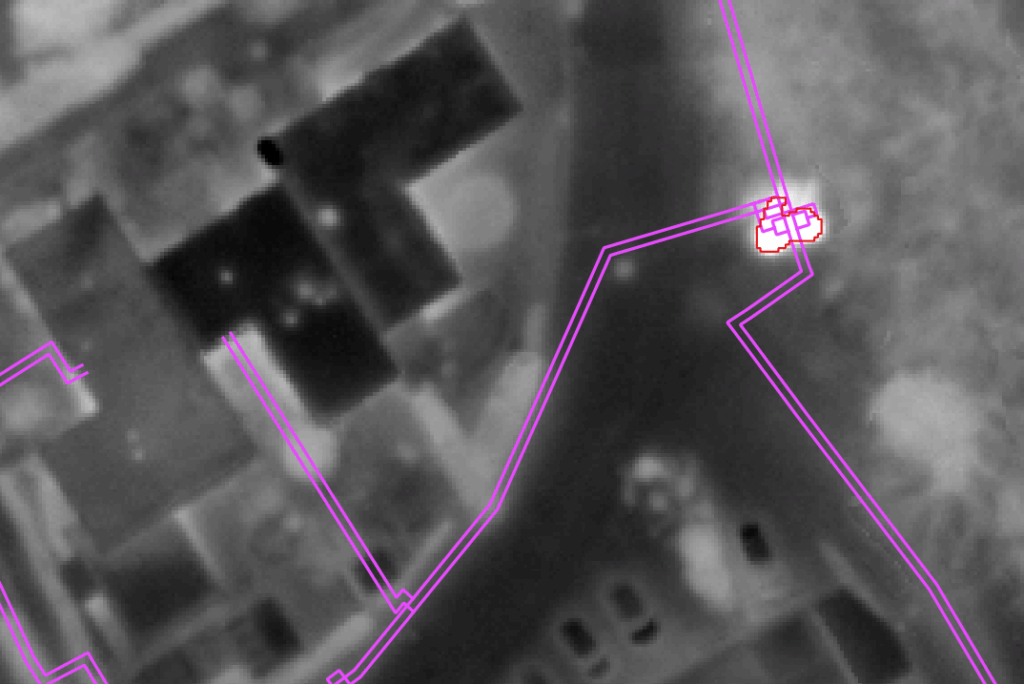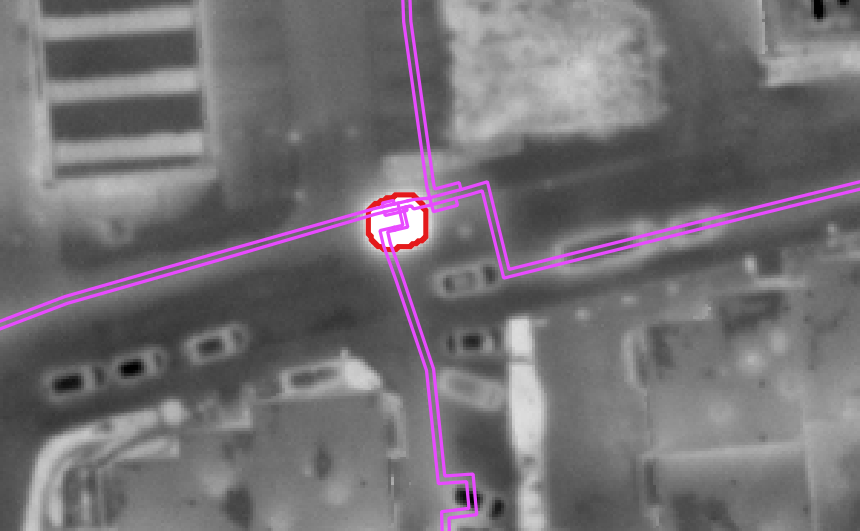In many cities, buildings are already supplied with heating energy via decentralized district heating networks. The expansion of district heating is considered a key component of a sustainable energy and heating transition and for achieving climate protection targets. Waste heat – for example from combined heat and power plants or waste incineration plants – is used to heat water, which is then transported to consumers via underground, insulated pipes.
However, many of these networks are getting on in years: Leaks significantly reduce efficiency and can lead to major damage or even the closure of network sections in the long term. For the operators of district heating networks, it is therefore crucial to detect leaks as early and efficiently as possible in order to be able to initiate countermeasures in good time.
We have met this challenge with remote sensing methods. The company Aerowest provided us with current thermal data at a spatial resolution of 20 cm from aerial surveys over Iserlohn. This data shows the surface temperature so that temperature anomalies in the area of district heating pipes can be detected. For example, if hot water escapes from a leak, it heats up the immediate surroundings, including the surface, which is reflected in the thermal data.
Based on this data, we have developed a process that automatically detects temperature anomalies in a first step using statistical analyses. In a second step, these anomalies are evaluated with regard to their possible cause, e.g. a leak in the district heating network.
The method we have developed not only provides a fast and reliable way of identifying possible leaks – it also creates a valuable basis for predictive maintenance and targeted repairs.
By using modern remote sensing technologies, municipal utilities and network operators can monitor their district heating infrastructure more efficiently, avoid unnecessary energy losses and increase security of supply in the long term – an important step towards a climate-friendly heating transition.
This turns an invisible problem into visible progress.


The figures show examples of temperature anomalies detected by our method in thermal data from Aerowest. Light shades of gray correspond to higher measured temperatures. Conspicuous anomalies that indicate possible leaks are circled in red. The course of the district heating network is shown in purple.
